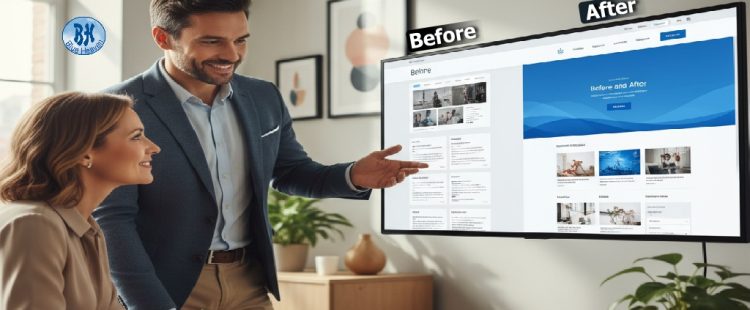Case Study: How a Strategic Website Redesign Improved User Experience, Trust & Conversions
Introduction
In today’s competitive market, having a website is not enough. Your website must speak to your customer, guide them clearly, load quickly, and inspire trust. Recently, I worked with a business in the spices and dry fruits industry that was facing declining engagement and low conversion rates despite having strong products and a growing distribution network.
The issue wasn’t the product — it was the website experience.
This case study explains what we found, how we approached the redesign, and what results were achieved.
About the Business
The client operates in the spice and nuts category, offering both retail packaged products and bulk wholesale supply for domestic and export markets.
Their goals were clear:
-
Improve credibility and trust online
-
Educate visitors about product quality & sourcing
-
Increase inbound business inquiries
-
Support both local and export customers
However, the website did not support these goals effectively.
Initial Website Challenges Identified
Through a detailed audit, we found several usability and performance gaps:
| Issue | Impact |
|---|---|
| Slow Loading Speed | Visitors dropping off before the site even loads |
| Outdated Design | Reduced trust & outdated brand perception |
| Made for Company, Not Customer | Messaging focused on “about us” instead of buyer needs |
| Poor Conversion Strategy | No compelling call-to-action; unclear next steps |
| Not Mobile Responsive | Major loss in engagement because most users browse from mobile |
| Weak Navigation | Visitors confused about where to go and what to do |
| Legal & Policy Pages Missing | Reduced buyer confidence, especially export buyers |
In summary, the site wasn’t designed to guide, convert, or build trust.
Our Redesign Strategy
We focused on building a customer-first digital experience that supports both B2B and B2C operations.
1. Rebuilt UX Around the Buyer Journey
We restructured the site to answer buyer questions in the natural order they think:
-
Who are you & what do you offer?
-
Why should I trust the quality?
-
How do I explore products?
-
How do I buy / enquire?
2. Modern Visual System
-
Clean typography
-
High-quality product images
-
Consistent color palette
-
Trust reinforcement: certifications, hygiene standards, sourcing quality
3. Performance Optimization
-
Image compression
-
Code-level clean-up
-
Better hosting environment
-
Lazy-loading for media
4. Conversion Framework
-
Clear CTAs like Request Quote, Download Product List, Talk to Sales
-
WhatsApp inquiry button for quick communication
-
Lead form placements where buyers naturally pause
The Transformation
Before After Cluttered, outdated design Modern, clean, trust-building UI Company-focused messaging Customer-first messaging No conversion paths Clear & simple inquiry and purchase actions Weak product presentation Rich product visuals with packaging & usage context Not mobile-friendly Fully responsive across devices
Results
Within the first few weeks of relaunch:
-
Bounce rate dropped significantly
-
Time-on-site increased
-
Product page visits improved
-
Inquiry rate started to rise (especially WhatsApp and B2B quote requests)
Most importantly:
The business now looks credible, modern, and easy to engage with — which is critical for both export buyers and local retail partners.
Conclusion
A website is not just your digital brochure.
It is your storefront, trust builder, and sales enabler.
When designed with your customer’s journey in mind, your website can support your brand reputation, increase the number of inquiries and help you grow.
What next?
If you’d like a free website performance and usability audit, comment below the word:
“Audit”

